Iron is an essential mineral that keeps our blood healthy and our bodies functioning properly. Without enough iron, people can develop anemia, a condition where there aren't enough healthy red blood cells to carry oxygen around the body. This can make you feel tired and weak.
Vitamin C, or ascorbic acid, is famous for its immune-boosting properties, but it also plays a key role in helping your body absorb iron. When you consume foods rich in vitamin C along with iron, your body can make better use of the iron from both plant-based and animal-based sources.
Eating a variety of foods that are loaded with vitamin C, such as oranges, strawberries, bell peppers, and broccoli, can enhance your iron absorption. Pairing these with iron-rich foods like spinach, lentils, and meat can help prevent anemia and keep your iron levels up.
- Understanding Iron and Anemia
- How Vitamin C Boosts Iron Absorption
- Rich Food Sources of Vitamin C
- Combating Anemia: Practical Tips
- Common Myths About Vitamin C and Iron
- Daily Requirements and Supplements
Understanding Iron and Anemia
Iron is a fundamental mineral essential for the human body. It's a key component of hemoglobin, the protein in red blood cells responsible for carrying oxygen from the lungs to the rest of the body. Without adequate iron, the body cannot produce enough healthy red blood cells, leading to a condition known as anemia. Anemia can cause symptoms like fatigue, weakness, dizziness, and shortness of breath, which can significantly impact daily life.
There are several types of anemia, but iron-deficiency anemia is the most common. It occurs when the body lacks enough iron to produce hemoglobin. This can happen due to a variety of reasons, including inadequate dietary intake, chronic blood loss, or an increased need for iron, such as during pregnancy. According to the World Health Organization, iron-deficiency anemia affects around 1.62 billion people globally, making it a significant public health issue.
Iron comes in two forms in our diet: heme and non-heme. Heme iron, which is more easily absorbed by the body, is found in animal products like meat, poultry, and fish. Non-heme iron is present in plant-based foods like beans, lentils, and spinach. While non-heme iron is less readily absorbed, consuming it with vitamin C-rich foods can enhance its absorption.
Understanding the dual role of diet and absorption efficiencies is crucial in addressing iron deficiency and preventing anemia. Certain factors can inhibit iron absorption, such as the presence of phytates in whole grains, polyphenols in tea and coffee, and calcium in dairy products. On the other hand, Vitamin C can significantly boost iron absorption, highlighting the importance of a balanced diet that includes both iron-rich and vitamin C-rich foods.
The symptoms of anemia can often be subtle and overlooked. Common symptoms include persistent tiredness, pale skin, chest pain, fast heartbeat, and shortness of breath. More severe cases might lead to complications like heart disease, as the heart has to work harder to compensate for the lack of oxygen in the blood. This makes early detection and treatment of iron-deficiency anemia vital.
"Iron-deficiency anemia is a widespread nutritional disorder, particularly affecting children and women in premenopausal years. It’s essential to address it promptly to improve the quality of life," says Dr. Jane Smith, a noted hematologist.
Routine blood tests can diagnose iron-deficiency anemia by looking at hemoglobin levels and other red blood cell indices. Treatment often involves dietary changes to include more iron-rich foods, iron supplements, and sometimes treating the underlying cause of iron loss. Regular follow-up with a healthcare provider ensures that the treatment is effective and that any adjustments are made as needed.
How Vitamin C Boosts Iron Absorption
Iron is available in two forms in dietary sources: heme and non-heme iron. Heme iron, which is found in animal products like red meat, poultry, and fish, is easily absorbed by the body. On the other hand, non-heme iron, which is found in plant-based foods such as lentils, beans, and spinach, is not as readily absorbed. This is where vitamin C comes into play.
When you consume non-heme iron, it's present in the ferric form, which is less soluble and harder for the body to absorb. Vitamin C transforms ferric iron into ferrous iron, a form that your body can absorb more easily. By this mechanism, vitamin C significantly enhances the bioavailability of plant-based iron. In fact, research suggests that consuming as little as 25mg of vitamin C can increase iron absorption by up to 67%.
Imagine you're enjoying a spinach salad. The non-heme iron in the spinach might not be fully absorbed by your body, but adding some lemon juice or including a fruit high in vitamin C, such as orange slices, can make a notable difference. This is why it's beneficial to pair iron-rich foods with those high in vitamin C.
Interestingly, vitamin C doesn't just boost absorption of iron; it also plays a role in protecting iron's bioavailability. For instance, certain compounds in tea and coffee, like tannins and polyphenols, can inhibit iron absorption. By introducing vitamin C into your meal, you can counteract these inhibitors to some extent. This protective aspect of vitamin C is especially important for vegetarians and vegans who rely more on non-heme iron sources.
To understand this interaction better, consider the words of Dr. Elizabeth H. Jeffery, a renowned professor of nutrition:
"Vitamin C is a potent enhancer of iron absorption, and its integration into the diet can significantly combat iron deficiency, especially for populations at risk."
So, how do you efficiently combine these nutrients in your diet? It’s simple. Start with a base of iron-rich foods like legumes, whole grains, and leafy greens. Add a punch of vitamin C through fruits like strawberries, oranges, and kiwis, or veggies such as bell peppers and broccoli. Doing so doesn’t just improve the flavors of your meals; it also maximizes the nutritional benefits.
Let's outline some easy dietary tips to integrate both vitamin C and iron:
- Pair iron-fortified cereals with a glass of orange juice.
- Add bell peppers to your iron-rich stir-fries.
- Snack on fruits rich in vitamin C like guava or kiwi after meals.
- Use lemon or lime juice as a salad dressing.
- Prepare smoothies using a combination of leafy greens and vitamin C-rich fruits.
By making these small adjustments, you can greatly enhance your iron uptake without much effort. Remember, the synergy between vitamin C and iron is a natural and effective way to maintain optimal iron levels and prevent anemia.
Rich Food Sources of Vitamin C
Vitamin C is found in a variety of delicious and healthy foods that can easily be incorporated into everyday meals. The most well-known sources are citrus fruits like oranges, lemons, and grapefruits. Eating these fruits fresh or juiced provides a good amount of vitamin C, which can boost iron absorption and support the immune system.
Berries, such as strawberries, blueberries, and raspberries, are also packed with vitamin C. Not only do they taste great, but they offer numerous health benefits. A cup of strawberries, for instance, provides more than the daily recommended intake of vitamin C. These berries can be enjoyed in smoothies, over cereals, or just as a snack.
Vegetables are another rich source of this essential vitamin. Bell peppers, especially the red varieties, contain significant amounts of vitamin C. Including bell peppers in salads, stir-fries, or as a crunchy snack can contribute to better iron absorption and overall health. Broccoli, Brussels sprouts, and kale are also excellent choices. These cruciferous vegetables are easy to cook and versatile in numerous dishes.
Surprisingly, some other foods that are not typically associated with vitamin C also contain good amounts of it. For example, papayas, pineapples, and kiwis are tropical fruits that can brighten up your diet and boost your vitamin C intake. A kiwi alone can provide more than the daily dosage of vitamin C needed by an adult.
Tomatoes and potatoes, often used in a variety of cuisines, add more than just flavor to dishes; they also add vitamin C. While cooking tomatoes can reduce their vitamin C content slightly, they still remain a good source, especially in dishes like tomato sauces or salsas. Potatoes, particularly when baked or boiled with their skin on, retain a good amount of vitamin C.
For those who prefer beverages, fortified drinks can be a practical way to consume more vitamin C. Many brands offer vitamin C-enriched beverages, including orange juice and other fruit blends. These can be a convenient option for those on the go or for kids who may be picky eaters.
Sometimes overlooked, herbs and spices like parsley, thyme, and cilantro can also provide a boost of vitamin C. Adding fresh herbs to your meals not only enhances flavor but also contributes to your vitamin C intake.
Making a conscious effort to include these foods in your diet can help you maintain adequate vitamin C levels, which is essential for maximizing iron absorption and preventing anemia. By mixing and matching these colorful and tasty options, you can ensure that you are getting this vital nutrient daily.
Combating Anemia: Practical Tips
Anemia can sneak up on you, making everyday tasks feel like a marathon. If you've ever felt unusually fatigued, found yourself short of breath from the simplest activities, or dealt with persistent headaches, low iron might be to blame. But don't worry, there are practical steps you can take to combat anemia.
First, let's talk about diet. Your diet plays a massive role in maintaining healthy iron levels. Foods high in Vitamin C can significantly enhance iron absorption when consumed together with iron-rich foods. Incorporate more citrus fruits like oranges, lemons, and grapefruits into your daily routine. Don't forget about strawberries, bell peppers, and tomatoes either—they pack a powerful punch of Vitamin C.
Pairing these with iron-rich foods ensures your body absorbs the maximum amount of iron. Leafy greens such as spinach and kale, along with legumes like lentils and chickpeas, are fantastic plant-based sources of iron. Meat-lovers also benefit from iron-rich options like liver, beef, and turkey. An effective combo could be a spinach salad topped with slices of orange or a stir-fry with bell peppers and beef.
Don't overlook iron-fortified foods. Many cereals and breads have added iron and can be an easy way to bolster your intake. Just check the labels to make sure you're getting what you need.
Cooking with cast iron cookware is another simple way to increase your iron intake. Foods cooked in cast iron pans can absorb some of the iron from the skillet, adding to your dietary intake. This method works best with acidic foods like tomatoes, which facilitate iron absorption.
Keep an eye on inhibitors. Some compounds can hinder iron absorption. For instance, caffeine and calcium can interfere with your body's ability to absorb iron. Try to avoid drinking tea, coffee, or consuming dairy products right before or after your iron-rich meals.
Stay well-hydrated. Dehydration can exacerbate the symptoms of anemia. Drinking plenty of water helps keep your blood volume at optimal levels, making it easier for your body to transport oxygen.
"Eating a diverse and balanced diet rich in both iron and Vitamin C can do wonders for your overall health. Our bodies are incredibly efficient when given the right nutrients," says Dr. Sarah Thompson, a noted nutrition expert.
It's also essential to be mindful of your cooking techniques. Overcooking vegetables can lead to nutrient loss. Steaming or lightly sautéing vegetables can preserve their iron and Vitamin C content better than boiling.
If you're considering supplements, consult with a healthcare provider first. Sometimes, dietary changes alone may not be enough, and a professional can guide you to the best supplements for your needs. Following their advice ensures you get the benefits without overdoing it.
Check labels and be aware of your daily requirements. While iron supplements can be helpful, too much iron can also be harmful. Monitoring your intake through diet and supplements can help maintain a balance.
Incorporating these practical tips into your daily routine can substantially improve your iron levels and help prevent anemia. These habits are easy to adopt and can make a significant difference in your energy levels and overall well-being.
Common Myths About Vitamin C and Iron
When it comes to nutrition, misconceptions can spread like wildfire. One of the most misunderstood areas involves the relationship between Vitamin C and iron. Let's debunk some of these common myths and shed light on what really happens when these two crucial nutrients interact in your body.
One prevalent myth is the idea that taking any amount of Vitamin C will automatically boost iron absorption. While it’s true that Vitamin C can enhance iron absorption, the effect isn't limitless. The body can only absorb so much iron at a time, and excessive Vitamin C does not significantly increase this uptake. Moderation remains key, and a balanced diet ensures you get the most benefit.
Another myth suggests that Vitamin C and iron should always be taken together, but this isn't entirely true. While it's helpful to consume Vitamin C-rich foods with iron sources to maximize absorption, it's not always necessary. Your body can store iron and use it over time, so your overall dietary pattern matters more than synchronizing every meal.
Many people think that only plant-based iron needs the help of Vitamin C for absorption. This misconception overlooks the fact that even heme iron from animal sources can benefit from the presence of Vitamin C. While non-heme iron from plants does need more assistance, enjoying a diet with a mix of both types can contribute to better absorption rates.
Some think that Vitamin C supplementation is the only way to enhance iron absorption. This isn't true; eating a variety of whole foods rich in Vitamin C and iron is equally effective. Supplements are handy but shouldn't replace a varied diet unless prescribed by a healthcare provider.
According to the National Institutes of Health, “Vitamin C can improve the absorption of non-heme iron, the form of iron present in plant-based foods.” This backs up that combination foods are highly beneficial.
Another myth is that cooking foods high in Vitamin C destroys their ability to help with iron absorption. While it’s true that Vitamin C is sensitive to heat, cooking does not eliminate it entirely. Some Vitamin C is better than none, and you can also eat fresh fruits and vegetables to ensure you get enough of this essential nutrient.
Lastly, there’s a belief that more iron is always better for health. This can be dangerous, as too much iron can lead to toxicity, causing damage to organs and other complications. Balance is the key, and ensuring you have enough without overdoing it is crucial to your well-being.
Understanding the truth behind these myths can help you make better dietary choices that effectively boost your iron levels. Combining a variety of foods rich in both iron and Vitamin C ensures you can maintain optimal health with natural, nutritional strategies.
Daily Requirements and Supplements
Getting the right amount of vitamin C and iron is crucial for maintaining good health. The daily recommended intake of vitamin C varies by age, gender, and life stage. For adult men, the recommended dietary allowance (RDA) is 90 mg per day, while adult women require 75 mg per day. Pregnant and breastfeeding women need more, around 85-120 mg daily. When it comes to iron, adult men need about 8 mg per day, whereas women need 18 mg due to menstrual losses. This requirement drops to 8 mg per day for women over 50.
Balancing your diet to meet these needs is essential. Foods rich in vitamin C include citrus fruits, strawberries, bell peppers, broccoli, and tomatoes. Iron-rich foods include lean meats, seafood, legumes, and leafy greens like spinach. It’s worth noting that the body absorbs iron from animal sources (heme iron) more efficiently than from plant sources (non-heme iron).
If you're finding it challenging to get enough of these nutrients from food alone, supplements can be a helpful option. Vitamin C supplements are widely available and can be a convenient way to ensure you're meeting your daily needs. The recommended upper limit for vitamin C intake is 2,000 mg per day to avoid potential side effects like stomach upset and diarrhea.
Choosing the Right Supplement
When selecting a vitamin C supplement, consider factors like dosage, form (e.g., tablets, capsules, or powders), and additional ingredients. Some supplements contain added bioflavonoids, which may enhance absorption. It's always best to consult with a healthcare professional before starting any new supplement regimen to ensure it’s appropriate for your individual health needs.
Iron supplements come in various forms, such as ferrous sulfate, ferrous gluconate, and ferrous fumarate. These differ in the amount of elemental iron they contain and their absorption rates. For those with iron-deficiency anemia, a healthcare provider might recommend a specific type and dosage. Ensuring adequate vitamin C intake when taking iron supplements can help improve absorption.
According to the National Institutes of Health, “Vitamin C can enhance the absorption of non-heme iron, the type of iron found in plant-based foods, by capturing it and storing it in a form that’s more easily absorbed by your body.”
Potential Interactions and Considerations
It's important to be aware of potential interactions between supplements and medications. For example, high doses of vitamin C can interfere with certain treatments, such as chemotherapy. Similarly, taking iron supplements with calcium-rich foods or supplements can hinder iron absorption, as calcium competes with iron for absorption in the digestive tract. To maximize iron absorption, it’s often recommended to take iron supplements on an empty stomach or with a source of vitamin C.
Monitoring your levels of these nutrients through blood tests, as advised by a healthcare provider, can help ensure you're on the right track. Both over-consumption and under-consumption can lead to health issues, so balanced intake is key. Remember, while supplements can help fill nutritional gaps, they shouldn’t replace a varied and balanced diet.

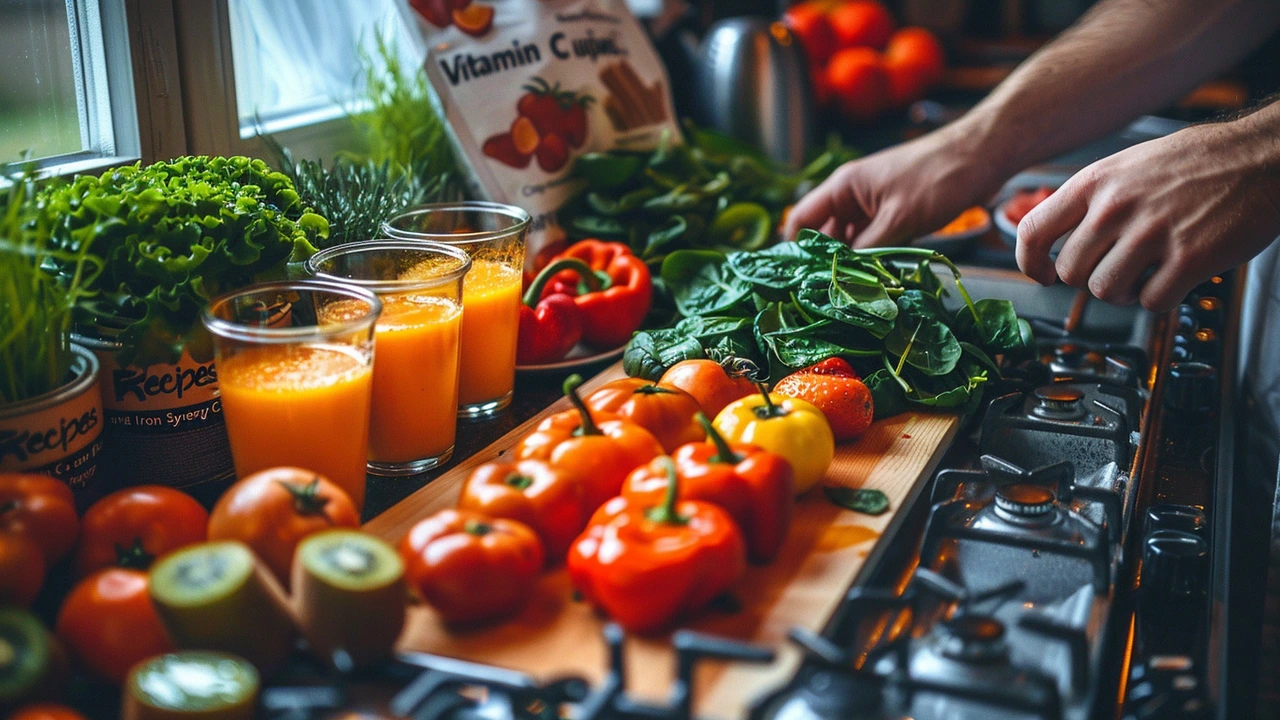
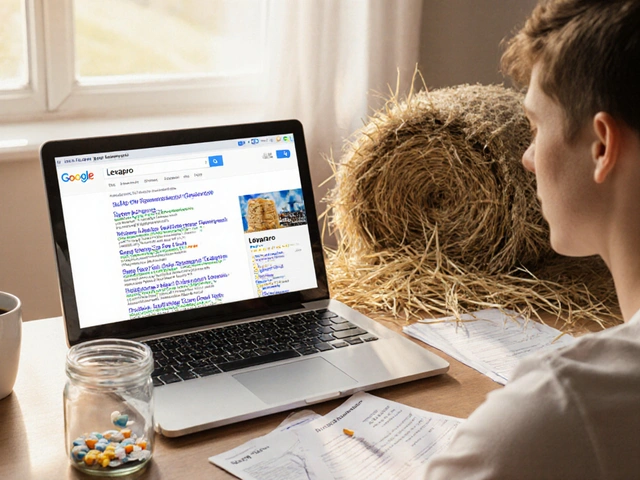
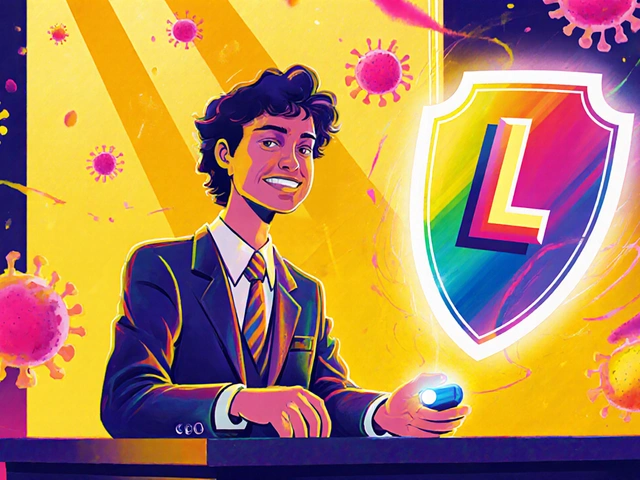
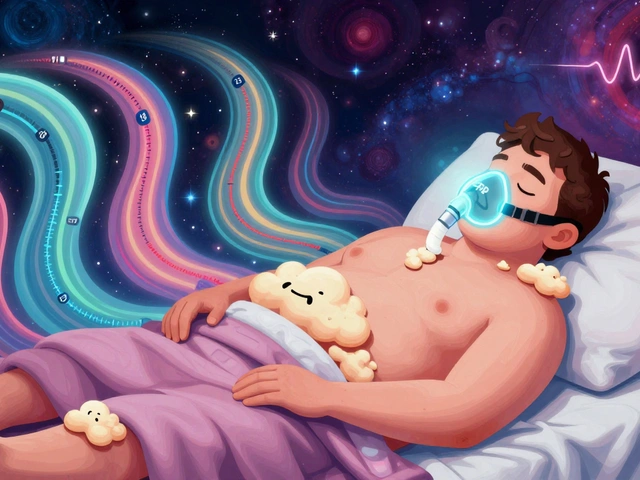
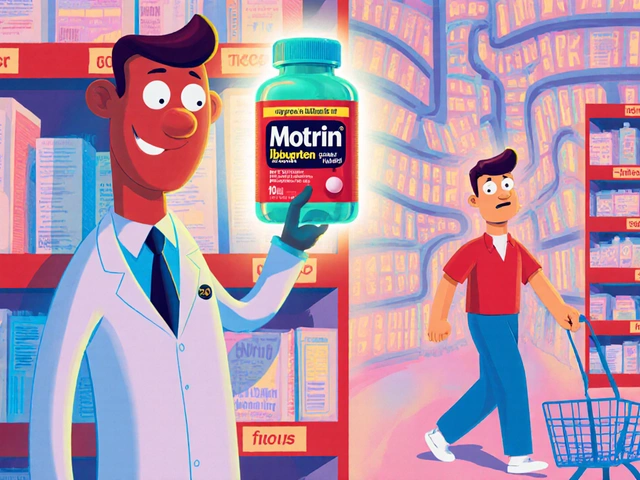
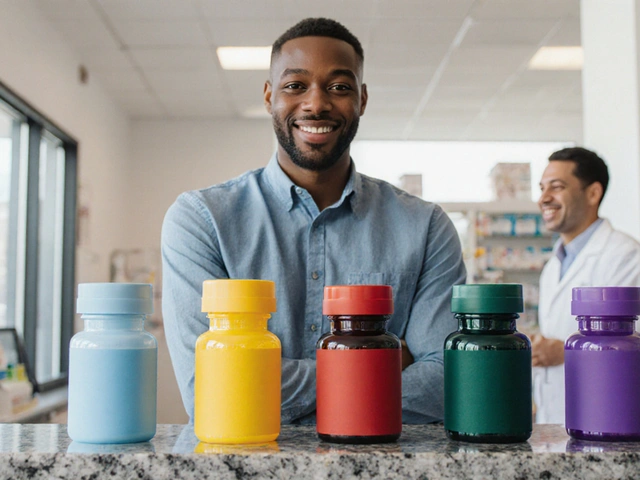
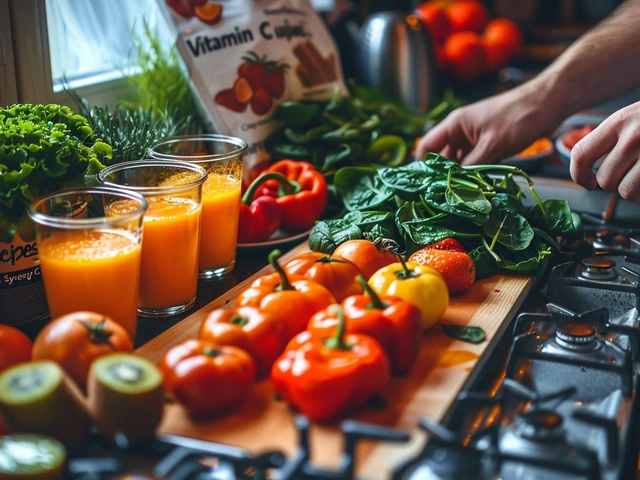
May 17, 2024 AT 07:01
Segun Kareem
Man, this post hit different. I grew up in Lagos where anemia was common, and my mom would make this weird spinach stew with tomatoes and peppers-no meat, just herbs and heat. Turns out she was doing the vitamin C thing without knowing the science. We didn’t have supplements, just food. And it worked. Now I see why. It’s not magic, it’s biology. Simple, ancient, beautiful. We lost touch with this kind of wisdom when we started chasing pills over plates.
Stop overcomplicating nutrition. Eat the rainbow. Orange with spinach. Bell pepper in your lentil stew. Kiwi after rice and beans. Your body knows what to do if you just give it the right tools.
Also-cast iron pots? Yes. I cook everything in mine now. Even scrambled eggs get a little iron boost. Weird, but true.
May 17, 2024 AT 21:01
Philip Rindom
Okay but like… why does everyone act like vitamin C is some kind of iron superhero? It’s just a cofactor. Not a miracle. I’ve seen people chugging OJ with their iron pills like it’s a potion from Hogwarts.
Also, ‘avoid coffee with meals’? Bro, I drink coffee at 7am and eat my iron-rich oatmeal at noon. My body’s not a microwave. It’s fine. Chill.
Also also-why is this post 10 pages long? I read the first 3 paragraphs and got the point. We’re not writing a thesis. 😅
May 17, 2024 AT 21:15
Jess Redfearn
Wait so if I eat oranges with my spinach I won’t be tired? That’s it? No pills? No doctor? Just fruit? That’s too easy. I thought this was gonna be hard. Like, I gotta take 10 supplements and drink green juice at 5am. This feels like a scam. Are you sure this isn’t a marketing trick? Who benefits? Big Orange? 🤔
May 19, 2024 AT 00:18
Ashley B
Let me break this down for you, because you’re all being manipulated. Vitamin C doesn’t ‘boost iron absorption’-it’s a distraction. The real issue? The government and Big Pharma want you dependent on supplements and fortified foods so they can patent the ‘solution.’
Did you know that in the 1970s, the WHO quietly removed iron fortification from school meals in developing countries? Why? Because they were testing if people would ‘naturally’ seek out vitamin C-rich foods… and they didn’t. So they pushed supplements. It’s behavioral control wrapped in nutrition.
And don’t get me started on cast iron cookware. That’s just rust leaching into your food. You think that’s safe? You’re literally eating metal flakes. Your liver is screaming. I’ve seen the studies. They’re buried. I’ve dug them up. You’re being poisoned slowly. Wake up.
Also, ‘eating oranges’? That’s a corporate ploy. Oranges are sprayed with glyphosate. You think that’s healthy? You’re just swapping one poison for another. 🤡
May 19, 2024 AT 06:04
Scott Walker
Bro this is actually super helpful. I’ve been feeling wiped all the time and thought it was just ‘adulting.’ Turns out I eat oatmeal with almond milk and call it a day. No fruit. No peppers. Just… beige.
So I just made a smoothie with spinach, kiwi, and strawberries. Tasted like a garden explosion. But I’m not dead. Like… actually not dead. 🤯
Also, cast iron pan? Just bought one. Cooking tofu in it tonight. If I pass out, send help. But if I feel like a superhero? I’ll send you a pic. 🍽️💚
May 19, 2024 AT 19:28
Sharon Campbell
lol why is everyone so into this. vitamin c? iron? what is this, 2008? i just take a pill. its easier. also i dont eat spinach because it tastes like dirt. and oranges are too sour. i like my cereal plain. and coffee. always coffee. who cares if it blocks iron. i dont care. im fine. 🤷♀️
May 20, 2024 AT 21:44
sara styles
Let me tell you something you won’t hear from mainstream nutritionists because they’re paid off by the food industry: Vitamin C doesn’t just enhance iron absorption-it alters the redox potential of the gut lumen, which modulates the expression of DMT1 transporters on enterocytes, thereby increasing ferric iron reduction and subsequent ferrous iron uptake at the brush border membrane. This is biochemistry 101, and yet no one talks about the *mechanism* because it’s too complex for TikTok.
And here’s the real kicker: non-heme iron absorption is also influenced by the gut microbiome’s production of short-chain fatty acids, particularly butyrate, which upregulates hepcidin suppression. But no one mentions that because they want you to think it’s just ‘eat oranges with lentils’ and boom-you’re fixed. It’s not that simple. Your microbiome could be destroyed from antibiotics, your gut lining leaky from gluten, and your HFE gene mutated, making you genetically resistant to iron absorption regardless of vitamin C intake.
And don’t even get me started on the fact that the RDA for iron is based on 1980s data from white, middle-class men, and doesn’t account for menstrual variations, inflammation, or gut dysbiosis in women of color. The WHO guidelines are outdated. The FDA is asleep. And you’re all just following memes about bell peppers like it’s a religion.
Real solution? Get your serum ferritin, transferrin saturation, CRP, and hepcidin levels tested. Then adjust based on genetic markers. Otherwise, you’re just throwing fruit at a problem that requires a PhD. And no, your ‘spinach smoothie’ isn’t going to fix it. Sorry. 😌